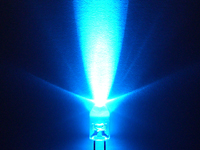|
We are the authorized
distributor
of Labsphere USA in
India. For
detail information
visit: www.labsphere.com
|
LED MEASUREMENT

Typical quantities for LED
measurements
of interest are luminous flux, luminous intensity, x, y, dominate
wavelength, peak wavelength, FWHM and for white LEDs CRI.
Total luminous flux
is the most important parameter for non-directional characterization
of an LED for luminous efficacy performance.
The most common method for measuring the total luminous flux
of any source included OLEDs and LEDs is using an integrating sphere
spectrometer. The integrating sphere spectrometer is calibrated with
a standard of total spectral flux employing the comparison method
made simple with application based software, a calibrated standard
lamp of known output, commonly referred to as the “comparison
method”. The results of this comparison determine the light output
test lamp.
For directional applications, LED intensity and spatial
distribution are the most important parameters. For intensity
measurements a precision entrance port into a near cosine sphere
detector is configured for Condition A or B measurements where the
device is located 31.6 cm or 10 cm respectively away from the
entrance port of the sphere intensity head. The head is coupled with
a spectrometer with application based software calibrated for
spectral intensity responsivity.
Spatial distribution
is a measurement of intensity as a function of viewing angle. This
measurement is traditional performed by holding the test lamp
stationary and swinging a small-aperture detector in an arc about
the DUT. A complete hemispherical characterization of the device can
be assembled by rotating the plane of measurement with respect to
the device, and repeating this test for a number of meridional
angular scans.
Another common method is holding the detection system stationary and
rotating the DUT in a goniometric stage. The data normalized to the
normal reading and typically imported into ray tracing programs for
device modeling
|




Selling of products &
earning money is not our target. We Precision Components &
Engineers give the best solution for the LED Measurement
System
We are committed to give the
best quality products to our Indian customers that is best in the
world.
|
![]()





